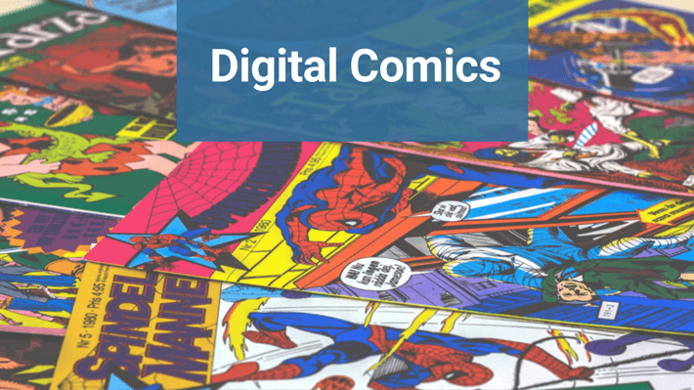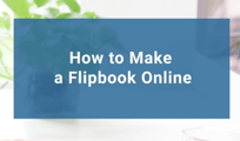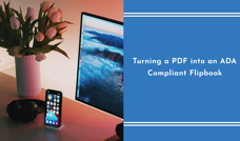Comics are on the rise. What used to be considered geek-only entertainment is now full-on mainstream—something you could actually discuss with your colleagues over coffee. Like: have you seen Black Widow already? Or: does Robert Pattinson really have it in him to play Batman? The jury is still out on that one. Sure, a great deal of this widespread popularity falls on movie and TV adaptations but more and more people turn to comics to learn the original stories their favorite movies and shows are based on. And in the digital age we live in, it’s only natural that for many it’s easier to opt for digital comics than browse through printed issues at the nearest comic book shop—especially if there are no such stores nearby.
The flipbook format seems to be the perfect substitute for paper comic books—after all, flipbooks do look and feel just like printed publications, down to the authentic page flip effect and the sound of turning pages. But are they a match for digital comics—and if yes, then in what way? In this article, we’ll try to answer these questions.
Flipbooks as Embedded Comics
If your goal is to put your comic strip or graphic novel online—for example, make it an integral visual part of your website—flipbooks* can be the easiest way to do so. Converted into a flipbook, a comic book turns into an HTML5 publication that can be shared as a link anywhere, be it Twitter or Facebook, or embedded directly into a website. That way, readers can flip through it even without leaving the page.
Flipbooks as Comic Book Previews
Flipbook embedding can also be neatly utilized for another aspect of the comic book industry—previews. A lot of publishers or distributors place a digital preview on each product page, even if a comic book is only sold in print. A preview helps readers to get a better idea of what’s inside—something a cover or text description can’t fully provide. So it only makes sense that previews should be as intuitive and user-friendly as possible. Unfortunately, as of now, they are often anything but.
Most commonly, you get a comic book preview in the form of several separate pages that have to be clicked one by one. Some websites use slideshows that open in a new tab without warning. Almost none of such previews can be scrolled through or read right on the product page.
That’s where flipbooks can and should step in. Firstly, as we’ve already covered, they can be embedded right into a webpage, creating a seamless viewing experience for a customer. A customer can flip the pages of the comic book they’re interested in via clicking or scrolling and zoom in to catch every detail.
If a publisher or distributor only offers printed copies for sale, the realness of a flipbook—the fact that it’s so close in look and feel to a paper publication—seems even more apt.
Look how Glénat, a French comic book publisher, uses the flipbook format to showcase their previews:
Such a solution also ensures content security, as the owner of a website can restrict flipbook embedding to their portal only, so that their exclusive comic book previews won’t be published anywhere else.
Flipbooks as Comic Book Artists Portfolios
Another use that flipbooks excel in is portfolios—especially those of visual artists and creators: photographers, make-up gurus, and, you’ve guessed it, comic book artists. By converting their digital art portfolio into a flipbook, an artist can send it as a link, watch statistics, and even add eye-catching interactive elements to its pages. They can also choose how their portfolio is going to be viewed—as a two-page spread, single-page layout, or slide presentation. Pretty handy, right?
Flipbooks as Standard Comic Book Readers
As we’ve established, flipbooks do make great digital comics—you can flip through them as if you’re reading a printed copy, only via your digital device. They also allow right-to-left flipping, perfect for reading manga (Japanese comics and graphic novels). However, even though lacking in the lifelike reading experience, most comic book readers surpass flipbooks in other areas, offering such specific settings as a panel-by-panel reading mode or color correction for old faded comics. Not to mention, they support not only PDF, but, most importantly, all the usual types of comic book reader files—CBR, CBZ, CB7, and so on. Flipbooks, on the other hand, can only be converted from PDF.
So, alas, not really a match here.
Conclusion
Even though flipbooks are hardly likely to become the next big thing among comic book reading tools, they should absolutely be considered as a go-to solution for publishers and distributors, as well as artists. Because when it comes to comic book presentation, flipbooks are totally a match!
Browsing the first pages or selected pages of the book is very important for a customer, especially with the online purchase. Our goal is to make you want to read the book. And FlippingBook works well for that goal
Try for free





